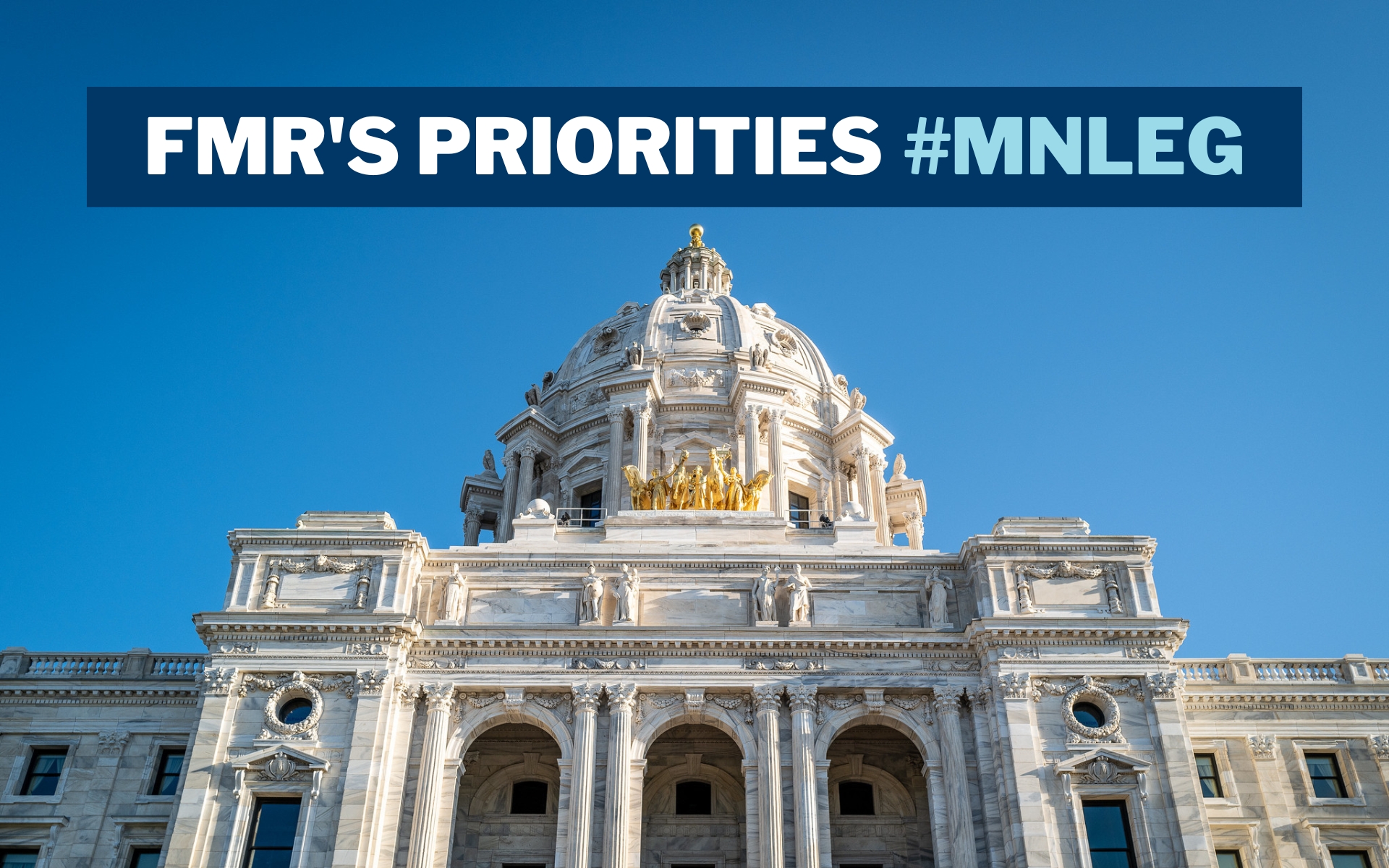Where FMR's 2023 priorities stand at the Legislature

What bills will get passed before the May 22 deadline? Lawmakers at the Capitol still have a lot of work to do. (Photo by Phil Roeder)
FMR entered the 2023 legislative session with an ambitious set of priorities for protecting and restoring our great river. While single-party control of the Senate, House of Representatives and governor's office yielded an early agreement on the contours of a two-year, $17.8 billion state budget, the bulk of the Legislature's work to finalize (and then pass) many bills will come in the weeks ahead.
The pieces of legislation mentioned below — several of which are included inside larger "omnibus" packages — will soon move to the full House and Senate for votes. Before they reach a floor vote, however, select members of both chambers will have to bridge any differences that exist between the House and Senate versions of each bill. This group, known as a conference committee, will then return amended versions of the bills for final passage.
With lawmakers returning to work after a short holiday break, now is a great time to take stock of where things stand before the final push to adjourn by the May 22 deadline.

The public is demanding action on invasive carp. Will the Legislature listen?
Last month, despite an unprecedented invasive carp catch on the Mississippi River, a Senate committee recommended just a fraction of the funds needed to install a carp barrier. Thankfully two of the project's champions, Sens. Foung Hawj and John Hoffman, stepped up and found a new funding opportunity: bonding.
A bonding bill is likely our best hope for funding a carp barrier this session — but it's far from a guarantee. If this has any hope of getting approved, we need constituents to tell their legislators to support an invasive carp barrier now, before it's too late.

Clean-water crops will almost certainly see some new funding this session. Unfortunately, the levels of funding provided are far less than what is required to support the potential growth of these crops and their markets.
The agriculture spending bill in both the House and Senate includes money for Forever Green research and value chain business development grants. However the dollar amount is significantly less than what was initially proposed. Members of both chambers will also have to bridge the current differences in one-time vs. base funding that appears in their respective bills.

In 1988, the public showed overwhelming support for directing a significant percentage of Minnesota Lottery funds to environmental projects. That dedication will expire in 2025 — unless state lawmakers give voters the opportunity to renew it.
We're very pleased to see legislation (in both the House and Senate) that would put this constitutional amendment on the ballot in 2024. In addition to renewing lottery dedication to the Environment and Natural Resources Trust Fund (referred to as ENRTF), the ballot question would also let voters strengthen the funding and make the resulting opportunities more equitable.

The disappointing news: A Clean Transportation Standard rulemaking process won't be coming out of the 2023 legislative session. But on the bright side, lawmakers have an opportunity to take action now that would set the table for real progress on a Clean Transportation Standard next year.
The Senate's Transportation Finance omnibus bill currently includes an amendment that would establish a work group to study the issue and make recommendations for the 2024 legislative session. The House version of the bill does not have this language.
We need River Guardians to urge their legislators to include the Clean Transportation Standard work group amendment in the final compromise version of the omnibus package.

Significant progress on our yearslong push to find and replace lead service lines appears to be just around the corner. The governor and legislative leaders in both the House and Senate agreed to put $240 million of the state's budget surplus toward lead service line work.
Is that amount enough to replace every one of these dangerous lines in Minnesota? Not quite. But it's a major step forward and an encouraging sign.

We may be moving closer to unraveling the mysteries of the St. Anthony Falls cutoff wall.
Funding for a geophysical investigation of the cutoff wall's condition (along with some related public safety and infrastructure risks should the nearly 150-year-old structure fail) is included in legislation coming out of the Minnesota House. And while the Senate currently lacks this language, we're optimistic a final push from River Guardians will lead to its eventual conclusion.

A positive development for the FMR Land Conservation projects we hoped to get funded this legislative session: Budget surpluses led to an addition of another $105,000 to the grant we anticipate will pass. This means a project we had previously cut because of budget constraints is now back on the agenda, adding to our list of projects to come. Our pollinator research project also remains on track for funding.

Every two years, Minnesota's nonpartisan Clean Water Council works with experts from across the state to craft detailed recommendations to the Legislature on how to best invest Clean Water Fund dollars. FMR and our allies typically work with lawmakers to ensure that these recommendations are reflected in the Legislature's final appropriations.
Heading into the final stretch of the legislative session, things are (thankfully) looking quite good.